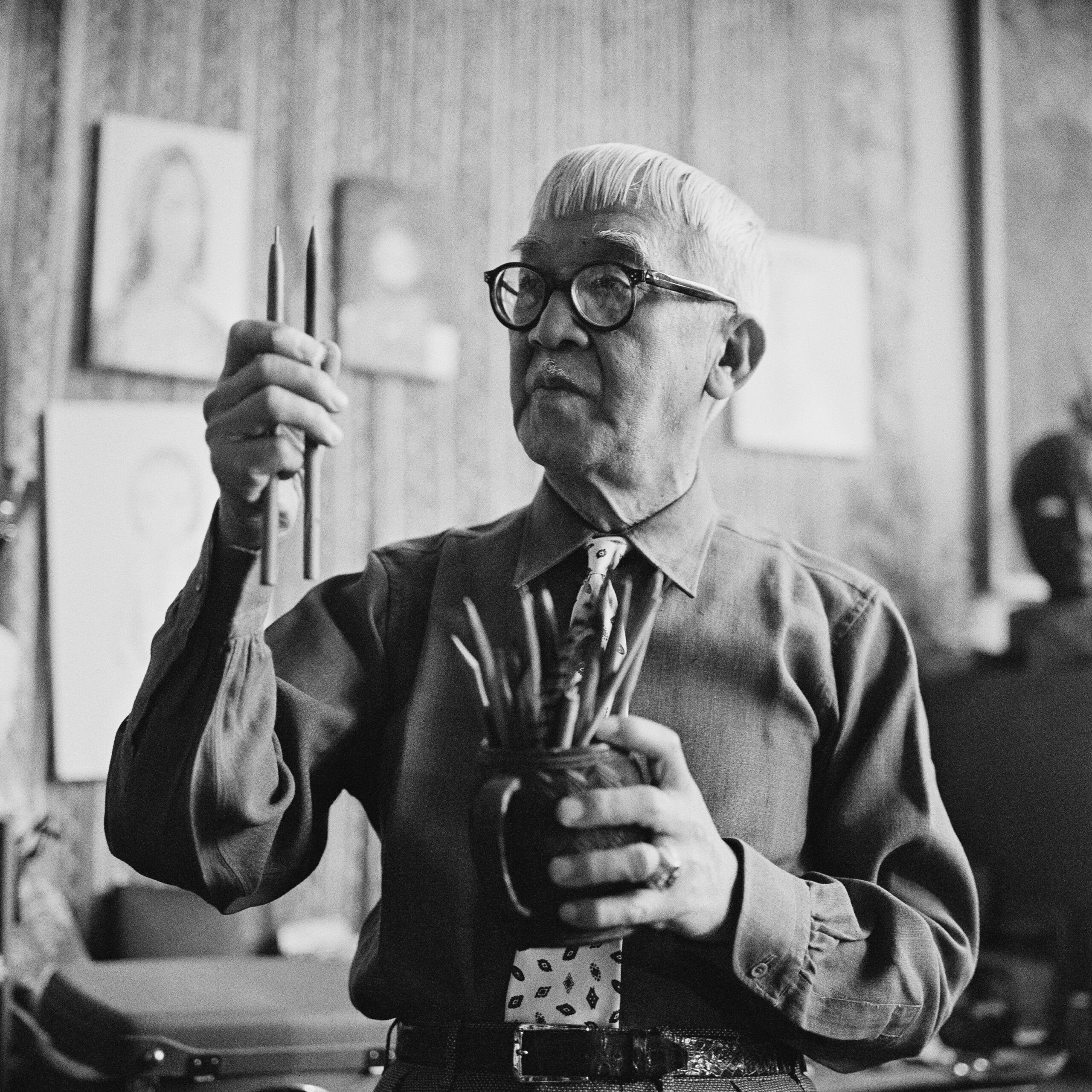
Portrait of Japanese Painter Léonard Tsuguharu Foujita (Japan-France, 1886-1968) photographed by Pierre Vauthey.
Portrait de Jeune Fille à Hanoi (Portrait of a Young Girl in Hanoi) is one of Foujita's masterpieces illustrating the beauty of a Vietnamese lady.
After having studied Western-style painting in Japan, Foujita travelled to Paris, where he encountered the international modern art scene of the Montparnasse neighbourhood and developed an eclectic style that borrowed from both Japanese and European artistic traditions.
Foujita reached the height of his fame in Paris in the 1920s. His watercolour and oil works of nudes, still lifes, and self-portraits were a commercial success, and he became a notable figure in the Parisian art scene.
Foujita spent three years voyaging through South and North America before returning to Japan in 1933. Foujita became an official war artist during World War II, illustrating battle scenes and raising the morale of the Japanese troops. His oil paintings won him acclaim during the war, but the public's view of him turned negative in the wake of the Japanese defeat.
Foujita returned to France in 1950, where he would spend the rest of his life. He received French nationality in 1955 and converted to Catholicism in 1959. His latter years were spent working on the frescoes for a small Romanesque chapel in Reims that he had constructed. He died in 1968, not long after the chapel officially opened.
Foujita is a much-celebrated figure in France, but public opinion of him in Japan remains mixed due to his depictions of the war. Recent retrospective exhibitions organised since 2006 in Japan have sought to establish Foujita's place in Japanese twentieth-century art history.










